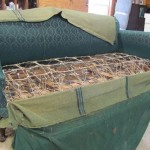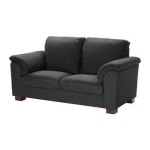How to Get Ink Out of a Fabric Sofa
Ink stains on fabric sofas are a common household problem. Whether from a rogue pen, a spilled bottle of ink, or a child's artistic endeavor, ink can quickly mar the appearance of a cherished piece of furniture. Successfully removing ink requires prompt action and the correct cleaning method. The longer an ink stain sits, the more difficult it becomes to eradicate completely. Understanding the type of ink, the fabric of the sofa, and the appropriate cleaning solutions are crucial for achieving optimal results. This article outlines various methods and considerations for effectively removing ink stains from fabric sofas.
Identifying the Ink Type and Fabric
Before attempting any cleaning method, identifying the type of ink is essential. Different types of ink react differently to cleaning agents. Common ink types include ballpoint pen ink, gel pen ink, permanent marker ink, and fountain pen ink. Ballpoint pen ink tends to be oil-based, while gel pen ink is often water-based but may contain pigments that are difficult to remove. Permanent marker ink is designed to be resistant to water and solvents, making it among the most challenging to eliminate. Fountain pen ink can vary in composition depending on the brand, with some inks being more readily soluble than others.
Knowing the fabric type of the sofa is equally important. Microfiber, cotton, linen, and synthetic blends each react differently to various cleaning solutions. Some solutions suitable for microfiber may damage delicate fabrics like linen. The sofa's manufacturer often provides a cleaning code tag, typically found under the cushions or along the back of the sofa. These codes indicate the recommended cleaning methods: "W" indicates water-based cleaners are safe, "S" indicates solvent-based cleaners are required, "WS" indicates both water and solvent-based cleaners are acceptable, and "X" indicates professional cleaning only. Adhering to these codes is crucial to prevent damage to the sofa's fabric.
If the cleaning code is missing or unclear, a discreet spot test is recommended. Choose an inconspicuous area of the sofa, such as the back or underneath, and apply a small amount of the cleaning solution you intend to use. Allow it to sit for a few minutes, then blot it with a clean cloth. Observe the area for any discoloration, fabric damage, or bleeding of colors. If any adverse reaction occurs, discontinue use of that cleaning solution and consider an alternative method or professional cleaning.
Initial Steps for Ink Stain Removal
Regardless of the cleaning method chosen, certain initial steps are crucial for maximizing success. Prompt action is key. The fresher the ink stain, the easier it will be to remove. Avoid rubbing the stain, as this can spread the ink and make it more difficult to extract. Instead, gently blot the stain with a clean, dry cloth or paper towel. The blotting action helps to lift the ink from the fabric without spreading it further. Repeat this process, using a clean section of the cloth or paper towel each time, until no more ink transfers onto the material.
Once the excess ink has been absorbed, consider using a vacuum cleaner with a brush attachment to gently lift any remaining loose ink particles from the fabric. This step is particularly helpful for textured fabrics or those with deep weaves where ink can become trapped. Avoid using excessive suction, as this can damage delicate fibers. The goal is to remove any surface ink before applying any cleaning solutions.
If the ink stain is on a cushion cover that is removable and machine washable, check the care label for washing instructions. If the label permits, wash the cover separately in cold water with a mild detergent. Avoid using hot water, as this can set the stain. After washing, air dry the cover to prevent shrinkage. If the stain persists after washing, proceed with one of the cleaning methods described below before placing the cover in the dryer. Heat from the dryer can permanently set the stain.
Effective Cleaning Methods and Solutions
Several cleaning methods and solutions can be effective in removing ink stains from fabric sofas. The choice of method depends on the type of ink, the fabric of the sofa, and the severity of the stain. It is always recommended to test the chosen method on a hidden area of the sofa first to ensure it does not cause any damage or discoloration.
Rubbing Alcohol: Rubbing alcohol (isopropyl alcohol) is a common household solvent that can be effective for removing many types of ink stains. Dampen a clean cloth or cotton ball with rubbing alcohol and gently blot the stain, working from the outside in to prevent spreading. Avoid saturating the fabric. Continue blotting, using a clean section of the cloth or cotton ball each time, until the ink is no longer transferring. Once the stain has been removed, blot the area with a clean, damp cloth to remove any remaining alcohol residue. Allow the area to air dry completely.
Hairspray: Hairspray, particularly those containing alcohol, can also be used to remove ink stains. Spray a small amount of hairspray directly onto the stain and let it sit for a few minutes. Then, blot the area with a clean cloth or paper towel. Similar to rubbing alcohol, work from the outside in to prevent spreading the stain. Repeat this process until the ink has been removed. After removing the stain, blot the area with a clean, damp cloth to remove any hairspray residue. Allow the area to air dry completely. Note that hairspray is more effective on fresh ink stains and may not work as well on older, set-in stains.
White Vinegar and Dish Soap: A solution of white vinegar and dish soap can be effective for removing ink stains from certain fabrics. Mix one tablespoon of white vinegar with one tablespoon of liquid dish soap in two cups of warm water. Dampen a clean cloth with the solution and gently blot the stain. Avoid rubbing the stain, as this can spread the ink. Continue blotting, using a clean section of the cloth each time, until the ink is no longer transferring. Once the stain has been removed, blot the area with a clean, damp cloth to remove any soap and vinegar residue. Allow the area to air dry completely.
Milk: Surprisingly, milk can sometimes be effective in removing ink stains, especially from lighter-colored fabrics. Soak a clean cloth in milk (whole milk or skim milk can be used) and gently blot the stain. Allow the milk to sit on the stain for approximately 30 minutes. The proteins in the milk help to break down the ink molecules. After 30 minutes, blot the area with a clean, damp cloth to remove the milk residue. Repeat the process if necessary. Allow the area to air dry completely.
Commercial Stain Removers: Numerous commercial stain removers are specifically designed for removing ink stains from fabrics. These products often contain a blend of solvents and surfactants that effectively break down and lift ink molecules. When using a commercial stain remover, carefully follow the manufacturer's instructions. Always test the product on a hidden area of the sofa first to ensure it does not cause any damage or discoloration. Apply the stain remover to the stain, let it sit for the recommended amount of time, and then blot the area with a clean cloth. Rinse the area with a clean, damp cloth to remove any residue. Allow the area to air dry completely.
Lemon Juice and Salt: For lighter fabrics, a paste of lemon juice and salt can be used to remove ink stains. Mix lemon juice and salt to form a thick paste. Apply the paste to the stain and let it sit for approximately 30 minutes. The lemon juice acts as a natural bleaching agent, while the salt helps to absorb the ink. After 30 minutes, blot the area with a clean, damp cloth to remove the paste and ink residue. Allow the area to air dry completely. Be cautious when using lemon juice on darker fabrics, as it can cause discoloration.
Nail Polish Remover: Acetone-based nail polish remover can be effective for removing ink stains, particularly those caused by permanent markers. However, it should be used with extreme caution, as it can damage or discolor certain fabrics. Always test the nail polish remover on a hidden area of the sofa first. If it is safe to use, dampen a cotton ball with nail polish remover and gently blot the stain. Work quickly and avoid saturating the fabric. Once the stain has been removed, blot the area with a clean, damp cloth to remove any nail polish remover residue. Allow the area to air dry completely. Ensure adequate ventilation when using nail polish remover, as it emits strong fumes.
Drying and Aftercare
After removing the ink stain, proper drying is crucial to prevent watermarks or further discoloration. Allow the treated area to air dry completely. Avoid using a hairdryer or other heat source, as this can set the stain or damage the fabric. To speed up the drying process, you can use a fan to circulate air around the affected area. Once the area is completely dry, inspect it carefully to ensure the stain has been removed entirely. If any residual ink remains, repeat the cleaning process.
For upholstery fabrics that are prone to watermarks, consider blotting the entire affected cushion or section of the sofa with a clean, damp cloth after removing the ink stain. This helps to evenly distribute the moisture and prevent a noticeable ring from forming as the fabric dries. Ensure the entire area is evenly damp and then allow it to air dry completely.
Once the sofa is completely dry, vacuum the treated area with a brush attachment to restore the fabric's texture. This helps to lift any flattened fibers and blend the treated area with the surrounding upholstery. If the fabric feels stiff or rough after cleaning, consider using a fabric softener spray to restore its softness and suppleness. Test the fabric softener spray on a hidden area of the sofa first to ensure it does not cause any discoloration or damage.
To prevent future ink stains, consider using a fabric protector spray on the sofa. These sprays create a barrier that repels liquids and stains, making it easier to clean up spills and accidents. Apply the fabric protector spray according to the manufacturer's instructions, and reapply it periodically to maintain its effectiveness. It is also advisable to keep pens and markers away from the sofa, especially if there are children in the household. Teaching children about the importance of keeping writing instruments away from furniture can help to prevent accidental ink stains.

How To Remove Ballpoint Ink Stain From Fabric Sofa

4 Quick Ways To Remove Pen Ink From A Couch Fabric Marker Stain Remover

How To Get Ink Pen Stains Out Of A Sofa Stain Carpet

3 Ways To Remove An Ink Stain From A Couch Wikihow

How To Get Pen Out Of Fabric Couch Sofa Ink Removal

How To Remove An Ink Stain From A Fabric Couch Carpet Cleaners Melbourne

How To Get Ink Out Of Upholstery Cleaning Remove From Fabric Car

How To Remove An Ink Stain From A Fabric Couch Electrodry Blogs

How To Remove Ink Biro Stains From Fabric Plumbs

3 Ways To Remove An Ink Stain From A Couch Wikihow








